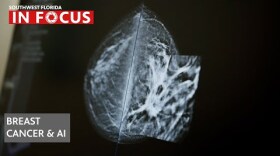Get ready for another red-tide-a-thon.
The main building blocks of red tide – chlorophyll, the organism Karenia brevis, and phytoplankton – are being found in abundance throughout Southwest Florida waters, no more so than off Lee and Charlotte counties.
“Over the past week, the red tide organism Karenia brevis was detected in 76 samples collected from Florida Gulf Coast,” said a Fish and Wildlife spokeswoman on the agency’s red tide hotline, which is updated daily. Satellite imagery “indicates patchy conditions along Southwest Florida with elevated chlorophyll extending along approximately 160 miles of coastline.”
Elevated chlorophyll levels in water can be predictive of an upcoming red tide bloom since they reflect an abundance of algae in the water. Add warm temperatures, high nutrient availability, calm seas, and harmful algae blooms most certainly follow.
Concentrations of K. brevis large enough to indicate red tide blooms were found in 18 of the samples, a dozen along the shores of Lee and Charlotte counties. A combined five were found offshore of Sarasota and Pinellas counties, and one each was found off Collier and Monroe counties.

The environmental satellites operated by the National Oceanic and Atmospheric Agency and the University of South Florida found the elevated chlorophyll levels 25 to 35 miles offshore of Pasco County, and along shore from the mouth of Tampa Bay to Lee County.
The patches, which serve as red tide food, ranged from 5 miles wide right from the coast out to 25 miles offshore of the Charlotte Harbor and Tampa Bay estuaries.
Many marine scientists believe red tide organisms upwell from deep in the Gulf of Mexico off Southwest Florida then are perhaps fed by natural means such as small organisms as they drift toward the shorelines.
Once in the shallower water, studies have proven that fledgling harmful algae blooms can be made to bloom bigger by the nutrient pollution mixed in with rain and flood waters from recent hurricanes like Helene and Milton, which are still draining off the coastal counties carrying nitrogen and phosphorus from fertilizers and animal waste.
After Hurricane Ian in September 2022, dozens of red tides came and went for four months in the same region.
Environmental reporting for WGCU is funded in part by VoLo Foundation, a non-profit with a mission to accelerate change and global impact by supporting science-based climate solutions, enhancing education, and improving health.
Sign up for WGCU's monthly environmental newsletter, the Green Flash, today.
WGCU is your trusted source for news and information in Southwest Florida. We are a nonprofit public service, and your support is more critical than ever. Keep public media strong and donate now. Thank you.








